The Cat and Dog Fight from New Deal is one of my favorite skateboards. I was in the 8th grade when the board came out. My best friend and I planned to hit our local skate shop after school. I desperately needed a new board. And I was determined to get The Cat and Dog Fight, but I had no money.
When I got to school that day, I asked fellow students if they had any spare change because “I forgot my lunch money.” I was on a mission. And by lunchtime, my determination paid off. I not only had enough money to eat but also enough to buy the board, a T-shirt, and a bunch of stickers.
Now that I think back on it, that was kind of a scumbag thing to do, but I loved the board.
Steve Douglas – Embarrassingly, I used to buy two bread rolls and stand outside the chippy and say, “Gis, a chip mate,” and make chip butties. I also used to walk home from school to save bus fare and wash cars—all money for skateboarding.
SPS – Can you explain the concept behind this graphic? And the top graphic as well? And who was the Artist?
Steve Douglas – Jose Gomez was the artist. The graphic on the top of the deck was bizarre, as it had a broken-down VW, and this was the board out when I had my car accident in a VW Golf. That killed skating as I had known. So this is my least favorite deck for that reason!
SPS – Hmmmm. Okay. So my favorite graphic is your least favorite… Let’s move on to the next question! What are some things you’re focused on these days?
Steve Douglas – I currently have two passion projects that I am proud of giving my time to. I am on the board of Make Life Skate Life. The work they have done and do is simply incredible. We just built the first skatepark ever in Laos. Tunis, Tunisia, is next!
Here’s an image from the skatepark, Make Life Skate Life constructed in Nepal. Just… Wow!
Steve Douglas – And London Calling is on August 17-20th. We are planning this now. This is a 70’s “thank you” to the critical riders that laid the foundation for the best and most influential skate scene outside of California. Without those riders, I firmly believe we would not have a scene like the UK today. RESPECT to them. That is what this event is about. The long-term goal is to have a permanent museum to represent the history of the UK skate scene. It deserves it.

SPS – That sounds exciting! I also heard you’re working on the distribution side of the business.
Steve Douglas – Work-wise, I am a director in Nineteen76 and Rolling Thunder Supply co, two skate businesses distribution based in the UK. With Rolling Thunder, we have a global reach focused on manufacturing price point completes to help grow skateboarding worldwide. It keeps me very busy, which is good as I like working.
SPS – Why would you say the UK is the most important Skate Scene outside California?
Steve Douglas – Respectfully, for its legacy, where can you find a more important scene outside of California? It ticks every box and every timeline for so many key categories. Here are a few examples, and these are quick notes:
- Top Riders: Mark Baker, Jeremy Henderson, Mark Sinclair, Danny Webster, Bod Boyle, Don Brown, Martin Sweeney (RIP), Tom Penny, Geoff Rowley, Tom Knox, Casper Brooker, and one of my all-time favorites Ben Raemers RIP (not to mention literally 100’s of others. The UK has depth going back to the ’70s.
- Brands: Benjy boards, Deathbox, Blueprint, Flip, Lovenskate, Heroin, Isle, Death, National, Skateboard Cafe and Palace, and many, many more
- Skate Spots: Southbank-Harrow-Romford, Meanwhile 1 and 2, Livingston, and so on…
- Incredible Skate Shops: Early skate shops Slick Willies, Alpine Action, and Surreys in the past, to the amazing selection of shops we have today…
- Key Mags: From Skateboard-To Rad-Document to Sidewalk to Free, Grey, North, Vague, skateboard Companion today, UK mags are very influential.
- Photographers: TLB-Mad Mike to Dobie to Skin Phillips, Oliver Barton, Percy Dean, Sam Ashley, Andrew Horsley, Leo Sharp to Wig Worland, and many others
- Visitors: UK is a key scene-Tony Alva-to Cab, Lance, Rodney-Gonz, almost everyone goes to the UK
Please tell me another state or country that can compare to the UK outside of California?
SPS- Tell us about growing up and skateboarding in England. What are some of your best memories of when you first started skateboarding? And how did skateboarding find you?
Steve Douglas – When I saw skateboarding for the first time on John Cravens’ Newsround TV program one day… I was like, WOW! My older twin brothers were good at all team sports, and I was meant to be like them. I HATED team sports. It seemed like the next day, and a person turned up at school with a board. Everyone from the year above was allowed to try it right after school. But me being lower, I got denied. And that pissed me off royally. I remember saying to myself, “I will show you!”
SPS – What was your first skateboard? Do you remember the setup?
Steve Douglas – Oh yes! It was a 1976 Super Flyer slalom bought from a sporting goods shop in Watford. It was plastic and had plastic wheels with loose ball bearings. You hit a small rock, and you were on your face. But still, I loved it.
SPS – How did things evolve from there? Especially during a time when skateboarding lost popularity?
Steve Douglas – When skateboarding died around 1980, the locals stopped. So I went to harrow skatepark and made lifelong friends. I am proud “H Boy” to this day.
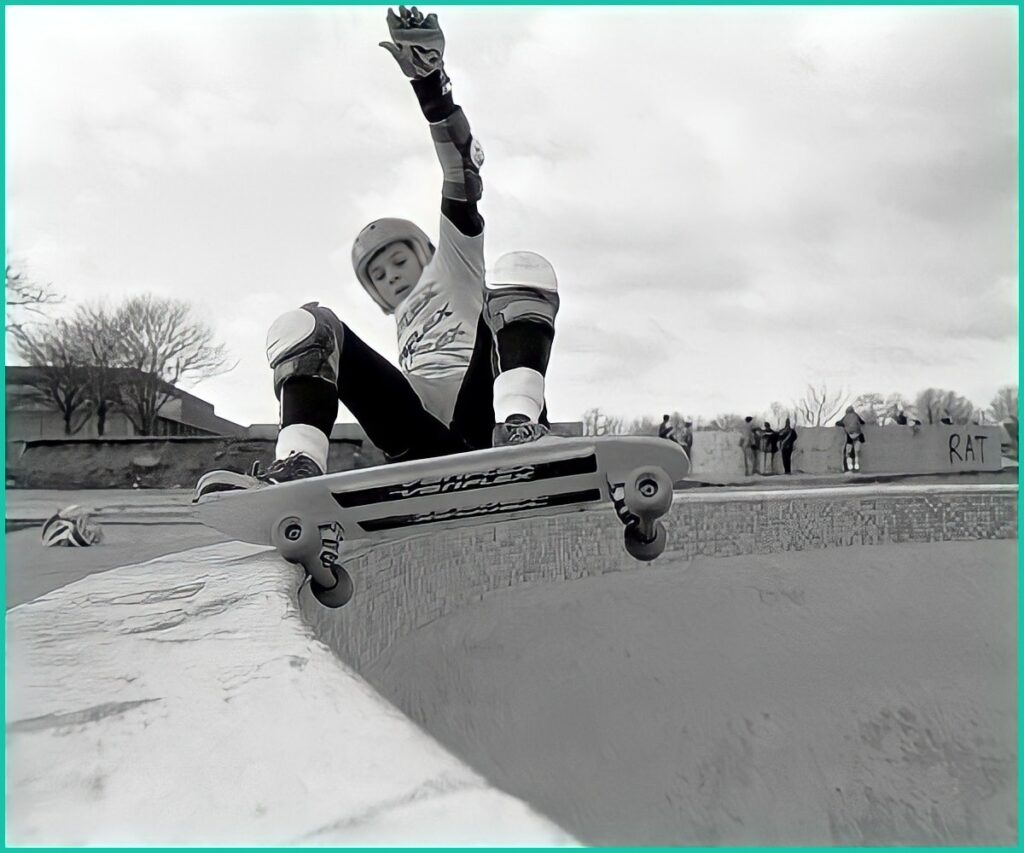
SPS – When did you get into contests?
Steve Douglas – In 1981 TLB suggested I enter contests. I said, “Not me,” and Tim said, “They have an under 14’s.” I was hooked. I met skaters from all over the UK. That was a real game-changer. I knew I wanted to meet new people and skate with the best.
SPS – Who were some of your first sponsors?
Steve Douglas – My first sponsor was Rollingstock, a shop in the North of England. Then in 1983, my first real board sponsor was Madrid. After winning the European Under 16 in Sweden, I was 15. It took 4 -5 months to get my first package, which was frustrating. Every single day in school, I was thinking, “Today it comes.” And it didn’t. It was sheer torture, and I finally gave up.
SPS – So, what did you do when the package came?
Steve Douglas – My Mum said to me when I got home from school one day, “You’re not going to ask if anything arrived?” I shot upstairs, and WOW! It had arrived! Little did I know, one of the boards was flat, so not concave… Luckily there were two boards, and the other one had concave!
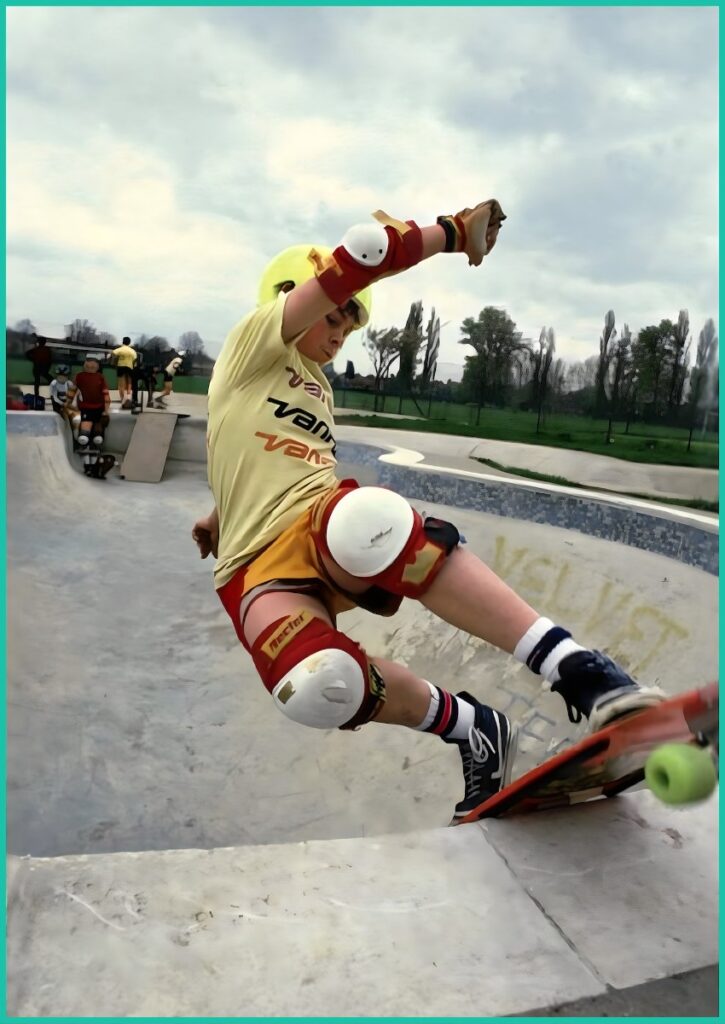
SPS – When did you come to the US?
Steve Douglas – I went to the US in 1984, and I rode for Madrid. I moved to Schmitt Stix in 1985. Then Indy, Quicksilver, and Vans, then New Deal in 1990, until I was forced to retire in 1991…
SPS – Take us back to when you discovered you were getting your first pro model with Schmitt Stix. This would have been your “Brew model,” Correct? What made you decide on this as your first graphic? Artist?
Steve Douglas – Jay Henry did the art. As I recall, I wanted something to represent how I got to this point. “Brewed in Harrow,” as that is where I grew up, “imported from Crystal Palace,” still London but where I skated most, family Coat of arms, and I like beer.
SPS – I totally remember the magazine ad for that one!
Steve Douglas – I used to place my sticker on my beer so it looked like I had my own beer.
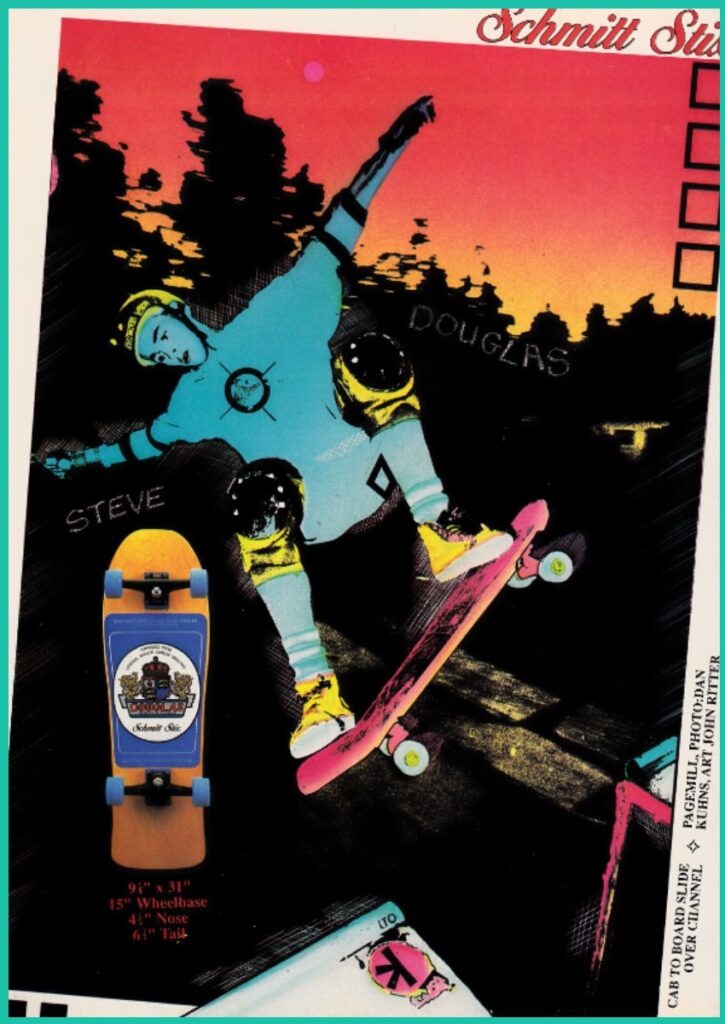
SPS – Your next model was the English breakfast Tea label. Am I assuming this had nothing to do with being from England? Just kidding! Tell us about this board graphic. Artist?
Steve Douglas – Very good, and yes, a proud Englishman. I used to drink tea, one cup a day, but with three sugars. One day I picked up a big bag of sugar and went, ” Oh shit, this has to stop. I have had 2 cups now in 25 years with no sugar. My Schmitt T-shirt said English Tea Shirt!
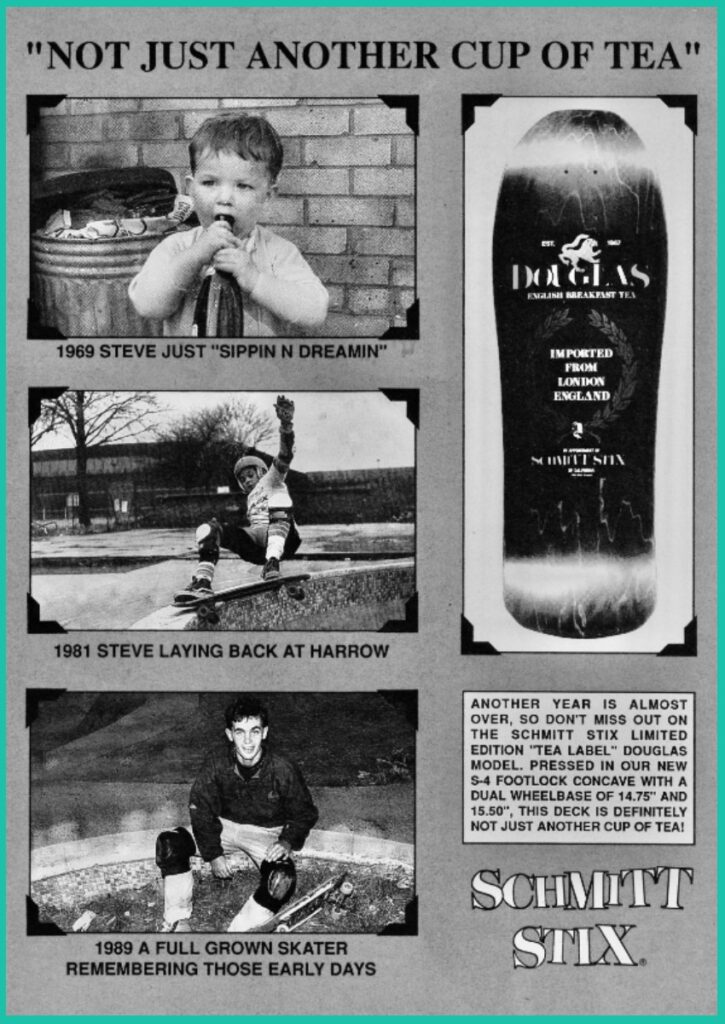
SPS – So, your graphics take a turn from the labels, and your next model is the Keyhole? This graphic has always intrigued me. Can you explain its concept and any hidden meaning or story within the graphic?
Steve Douglas – Had the concept for ages but did not know what to put in the keyhole. Then I got the inspiration from one of my favorite bands, Stiff Little Fingers, and their album and the name of my first zine, “Go For It.” the artist was Mick Forster.
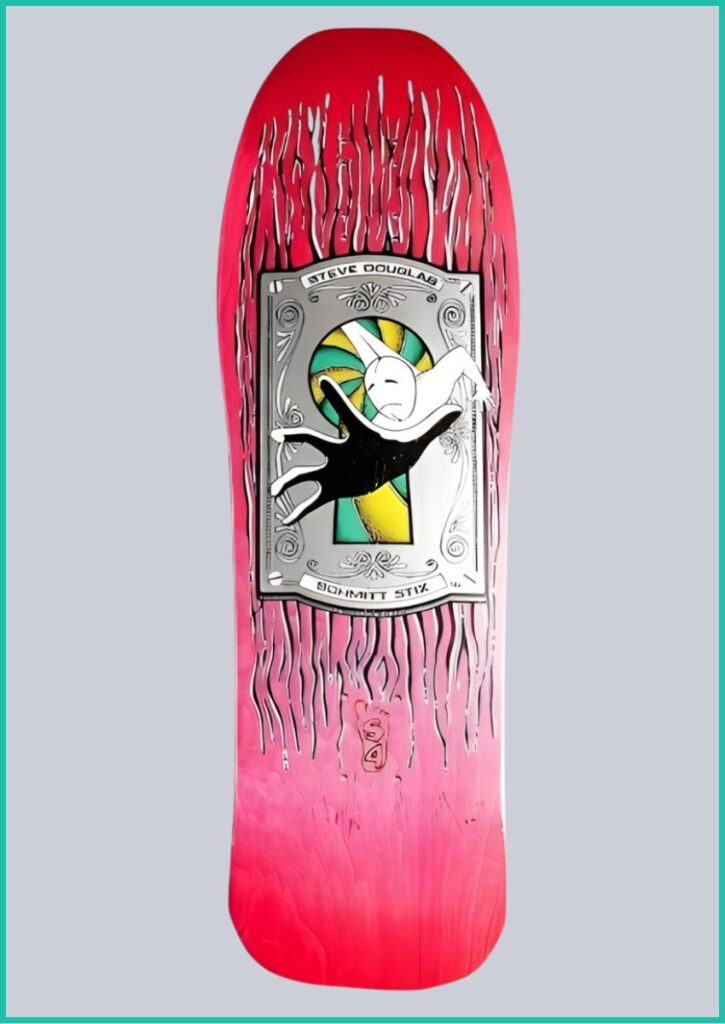
SPS – Explain the European Postage Model. Is the date in the graphic significant?
Steve Douglas – Not sure of the significance of that date to be honest. Not a lot of thought when into this one, I believe. I used the concept from my RAD page. The artist was Erika Stanley. (RIP)
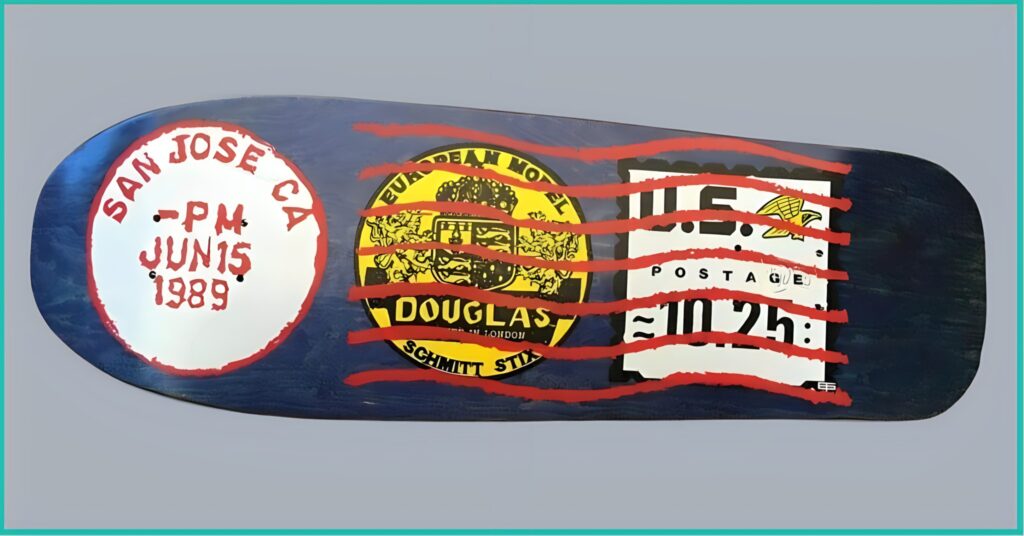
SPS – That brings us to New Deal. Paul Schmitt, Andy Howell, and Yourself start The New Deal. Take us back to how things with skateboarding were going and how you guys came up with the concept.
Steve Douglas – Bob Denike from NHS came up to me in 1989 at an Action Sports Retailer event, and he said when we were ready, NHS was ready to back us. I physically ran and told Paul. Paul replied, “I have known that Rocco would back us also.” I was like, “Well, we are going to leave.” There was zero doubt in my mind.
Later that year, I went back to the UK and met Ray and Gary. They had a small shop by Harrow skatepark called New Deal Skates.
I used to work with RAD magazine as the American correspondent. I used to get news and photos and had my own page of news that was more current than the US mags, as it was the last page printed every issue. I used to fax it over on the last day.
RAD was working on a photo annual, and Paul said, “Steve, make the ad happen. I will pay for it. Just make it happen.”
I was stoked. I had one of the boards, and I needed the 2nd. Surrey was the distributor and a shop I used to visit before I was sponsored. So I set out to working only 25 mins from Waterloo… People that know will know.
Wow, this meeting changed the trajectory of my life.
I walked in, and it went like this.
Hi, I am Steve Douglas. I used to buy many of my boards here, but now I am a pro and live in the US. I am back for a few contests, and I am working on the RAD photo annual. Paul Schmitt has very nicely said that if I can make an ad, he would pay for it. I know you’re the UK distributor, I have one board, but I need the second one.
There was a long pause.
“Well, the last time we did this for Danny Webster, I never got it back.”
I replied.
Hang on a second, you are the distributor. You are not paying for the ad, but you will benefit from the ad.
Another long pause.
No, Steve, you’re not listening to me. When I did this for Danny, I never got the board back.
My response was to the word, as I recall:
Are you F-ing telling me that I am going to take out my wallet and buy my board, with my name on it, and make an ad that you will benefit from at no cost to you?
He gave me the board, but I was like, “F-me. This shit must change!”
Back in the US a few months later, at the Del Mar contest Jan 1990 (after Chris Miller quit), I met with Paul after qualifying, wearing a new deal skates shirt. And I said the whole team would quit if we didn’t leave Vision.
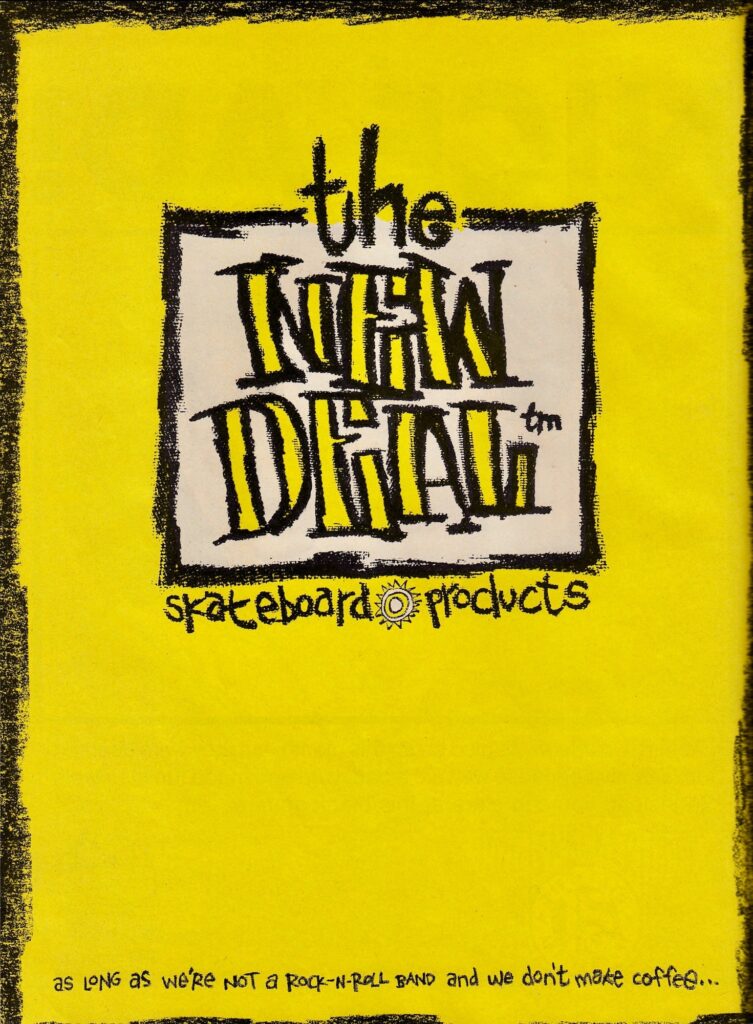
Luckily Paul went for it. Andy drew the square New Deal logo. And Paul returned to the crowded hotel room and said, “As long as we’re not a rock-n-roll band, and we don’t make coffee, it s ok.”
That logo and that message were our first ad.
SPS – Your “chums” model touches base back to the keyhole model. What’s the story with this board? The t-shirt design for this board, the Dalmatian, has stitches. What’s the significance of these? Artist?
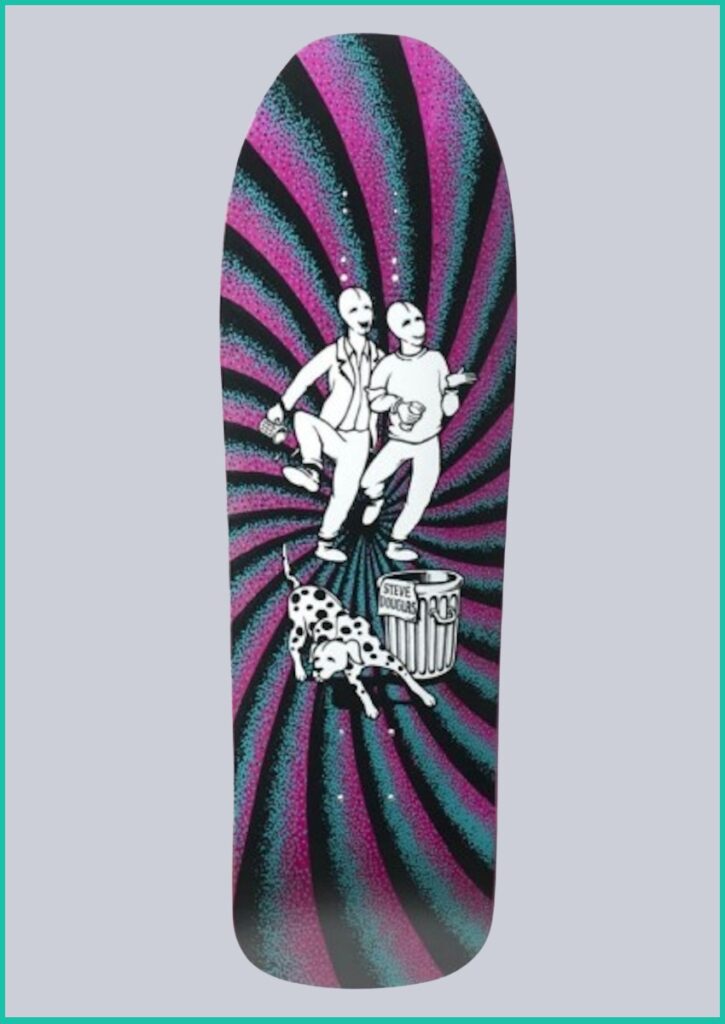
Steve Douglas – It was just the next stage of the guy coming out the keyhole (that had stitches), and I had a Dalmatian in real life. Mick Forster (Harrow Boy, ripping skater, and great friend) did the art.
SPS – This brings us back to “The Cat and Dog Fight,” which you mentioned is your least favorite deck. What is your favorite deck?
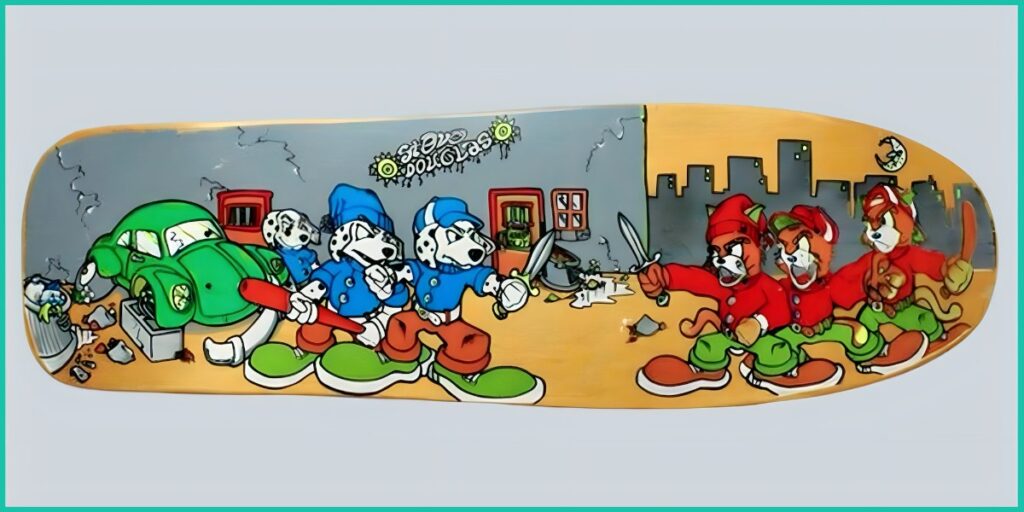
Steve Douglas – Hands down, my first model brewed in Harrow and imported from Crystal Palace means a lot. My second favorite deck would be the Schmitt Stix Keyhole!
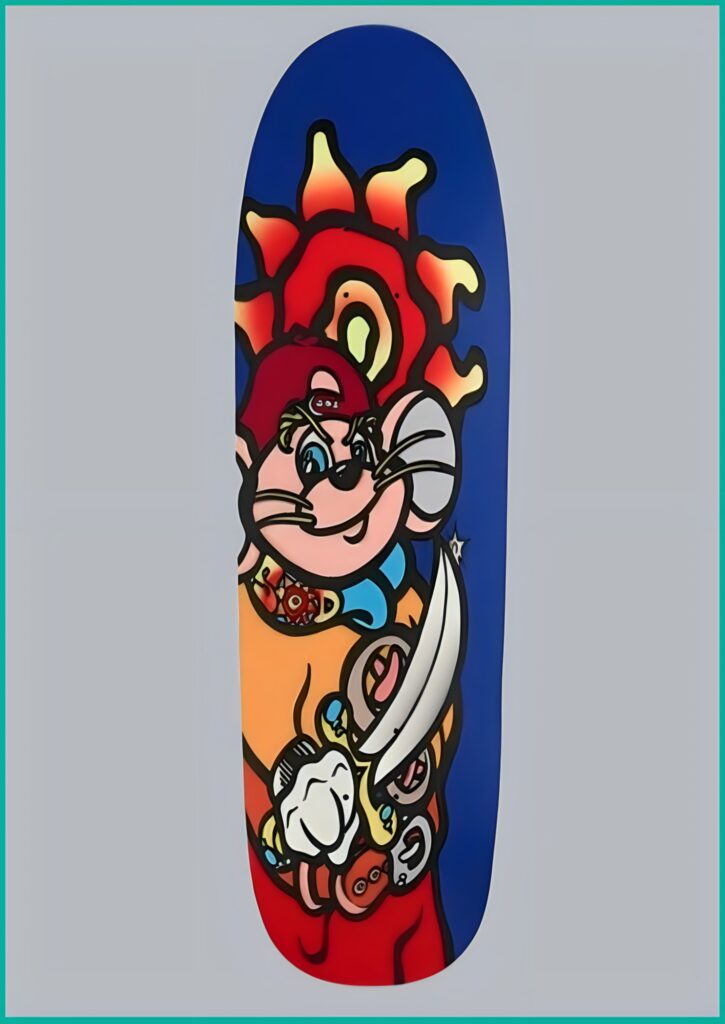
SPS – Then you have “Pirate Mouse.” Is there any specific meaning to this graphic? Who was the artist?
Steve Douglas – Jose Gomez drew this one. It was my last model. It was my retirement board, and to be honest, I could have milked it, but I just wanted to set the right example for the team and transition to the biz side. As a result of the car accident, my skating as a career and my passion were done. It was sad (and still is), but I had not killed myself or others, and I will always be thankful for that.
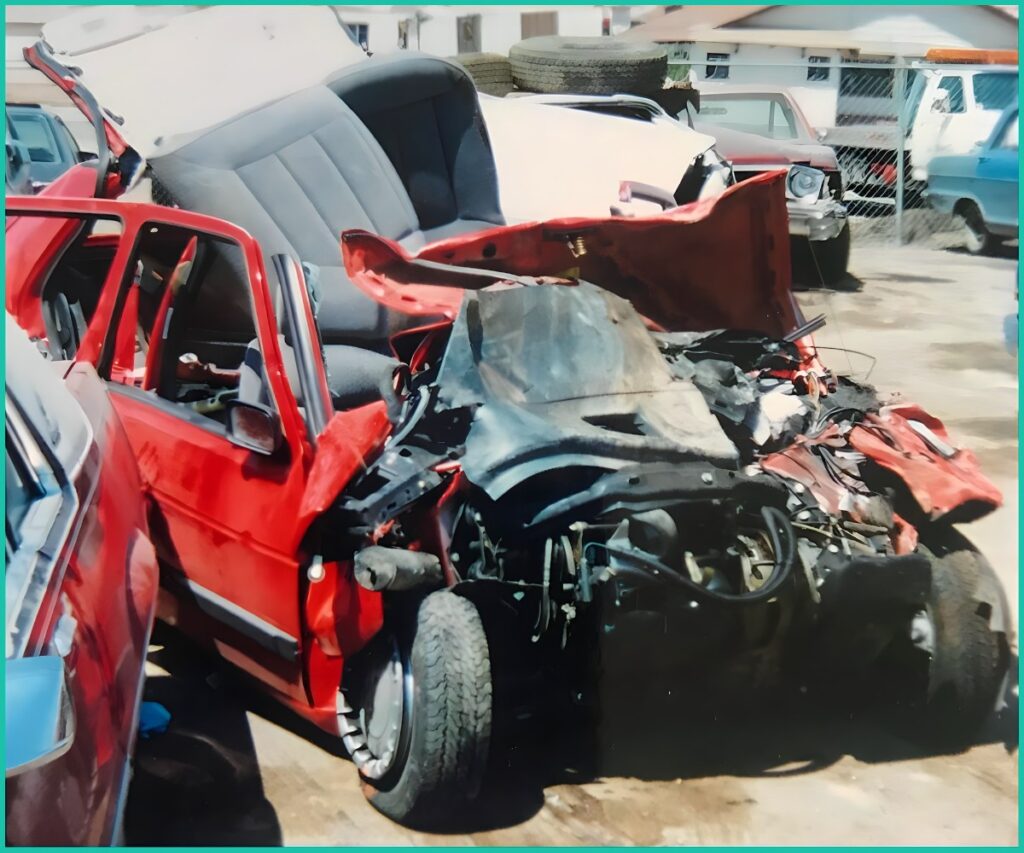
SPS – That looks gnarly. I don’t know how you survived.
Steve Douglas – I was very close to death when I was in the hospital. In fact, Paul called riders and said, “We are not sure if Steve will make it through the night.” Skateboards in the back of the car saved my life. I was delivering them to a skate shop called Gremic in Los Gatos.
SPS – What was your involvement in the New Deal relaunch?
Steve Douglas – My original thought was to do a 15-minute documentary on the 15-minute promo video, as I felt that was the forgotten video, and then do a release of the first boards and be done. Then rightly or wrongly, it grew bigger to include all the riders of the first three videos I made, 15 Min Promo, Useless Wooden Toys, and 1281. I gave 100% to the launch. When I do something, I am all in.
SPS – What was your reason for leaving?
Steve Douglas – My partners were not able to commit to what I felt needed to do it properly, so I decided to leave and focus on what I already had going on. All good I love them both, I am still a fan and an ex-rider but not actively a part of it pretty much since the re-launch, but I will jump in when asked. Gorm Boberg was the unsung hero in 1990, and he basically redrew 98% of the re-issue graphics, Gorm Rules!
SPS – The relaunch party looked fun.
The New Deal Art Show in LA was amazing. The Odd Numbers played after, which was incredible. Overall the launch was a big success. But some of our riders and many people did not even get inside, which was stressful. Personally, that night still haunts me.
SPS – Of all the aspects of the New Deal relaunch, what do you recommend we check out?
Steve Douglas – I recommend checking out the Useless DVD with a full new remix, full-length video with new (old footage), and lots of extras. H
SPS – Throughout your skateboarding career, you have been very successful industrywide. What is the accomplishment that you’re most proud of?
Steve Douglas – I have been very lucky to of been involved in many things, but can I pick two? Number one is 411VM for many reasons, and number two is changing distribution to be in the hands of skateboarders. Not glamorous, but important for the next generations, and this is what has happened.
Many of these distributors we changed in 1990 are still around today, and Skateboarding is in way better hands. I am sure many people would have been surprised by number two. That’s why I had to say it.
SPS – Where do you see yourself and the future of skateboarding heading?
Steve Douglas – I still want to be involved, and I want to give back skateboarding is incredible. Skateparks are being built worldwide, and women’s skateboarding has come so far. Whatever you are into with skateboarding, it’s going on, and everyone is welcome. This has been constant about skateboarding.
It’s the most diverse activity, or if you want to call it a Sport, that is a great reason to be proud of where we have come from and makes me feel great about the future if you had told me we would be here in 1980, I would have laughed.
I also wanted to thank Neil from Scienceversuslife for the scans!
SPS – Steve, your contributions to skateboarding are greatly appreciated. Your successful and inspiring events have had a significant impact on the industry. Thank you for sharing your story!

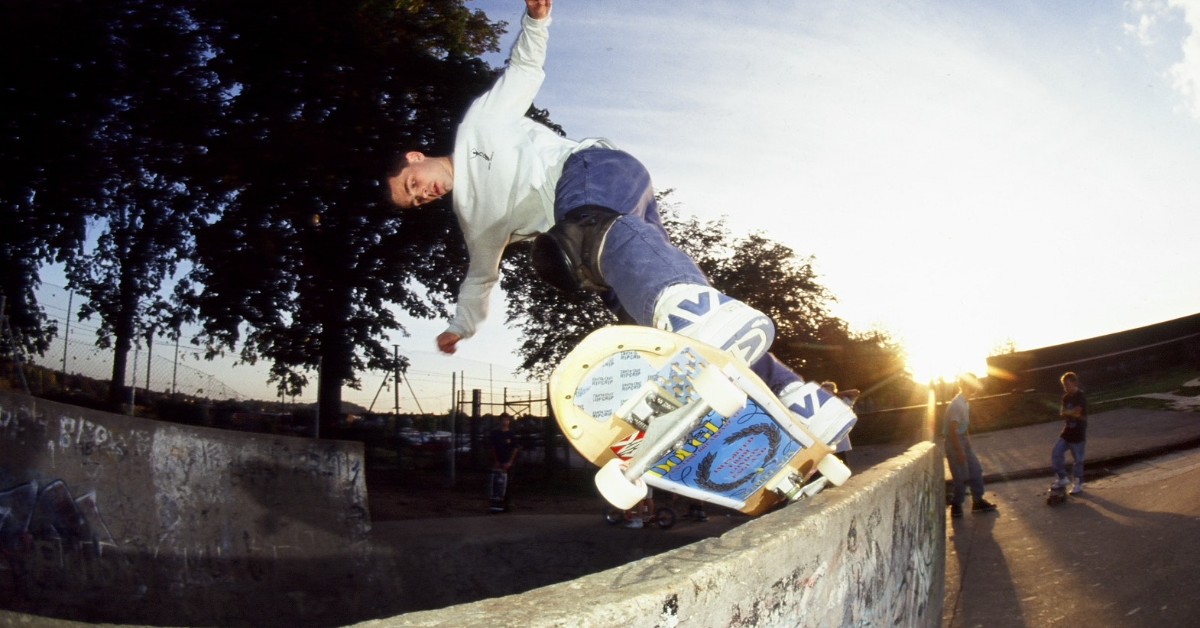
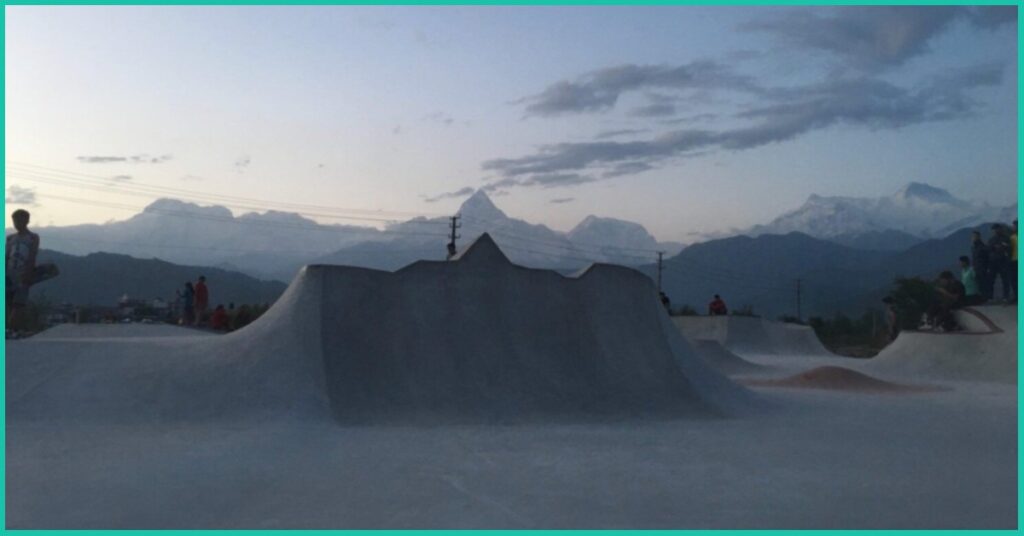
Steve is such a good geezer…great to hear his story again…
He pretty much nailed it Phil with grace.
Cool read! For the record Erika Stanley did the Euro Stamp graphic. She also did Hazze Lindgrens Crowbar v.2 for Schmitt Stix among others.
Hey thanks for this info, Johan!
Hi Steve, great interview mate…was the John Craven’s newsround program anything to do with the skatewave trip to America can you remember?
See you at the Southbank fella… respect.
LSD
👊👊👊👊👊👊
Erika Stanley was since is a kickass tattoo artist based in LA and Copenhagen but tragically passed away a few years ago.
Picture proof of this and her other works can still be found on http://www.instagram.com/erikafromamericatattos if you scroll to April 2018
Thanks for sharing Steve. Come to Atlanta sometime. My phone number has changed.
A very passionate great read Steve well done, you may of retired in 91 but you are still having a very long innings respect, your good freind Shanie.
Fantastic words there Steve!